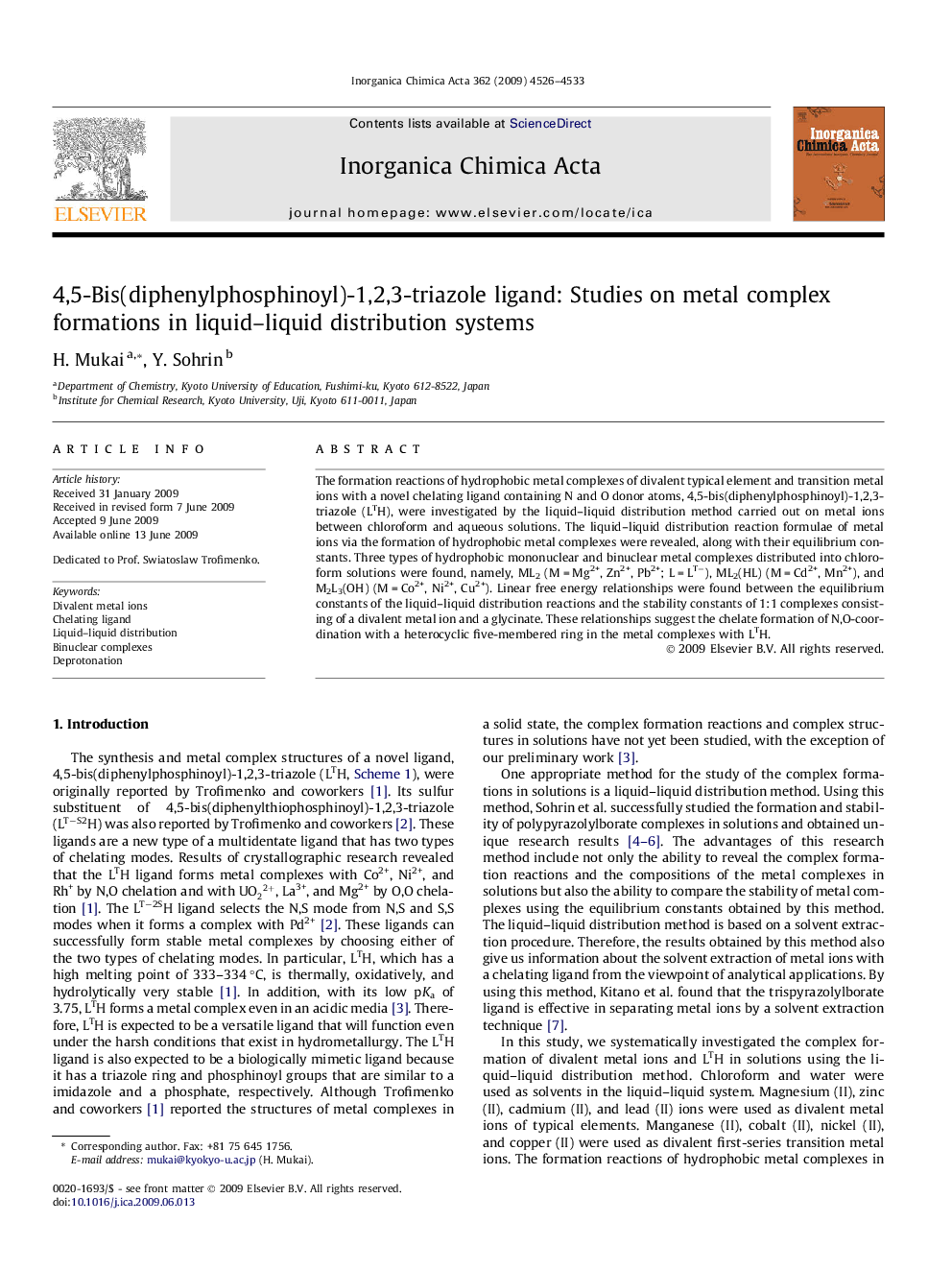| Article ID | Journal | Published Year | Pages | File Type |
|---|---|---|---|---|
| 1309571 | Inorganica Chimica Acta | 2009 | 8 Pages |
The formation reactions of hydrophobic metal complexes of divalent typical element and transition metal ions with a novel chelating ligand containing N and O donor atoms, 4,5-bis(diphenylphosphinoyl)-1,2,3-triazole (LTH), were investigated by the liquid–liquid distribution method carried out on metal ions between chloroform and aqueous solutions. The liquid–liquid distribution reaction formulae of metal ions via the formation of hydrophobic metal complexes were revealed, along with their equilibrium constants. Three types of hydrophobic mononuclear and binuclear metal complexes distributed into chloroform solutions were found, namely, ML2 (M = Mg2+, Zn2+, Pb2+; L = LT−), ML2(HL) (M = Cd2+, Mn2+), and M2L3(OH) (M = Co2+, Ni2+, Cu2+). Linear free energy relationships were found between the equilibrium constants of the liquid–liquid distribution reactions and the stability constants of 1:1 complexes consisting of a divalent metal ion and a glycinate. These relationships suggest the chelate formation of N,O-coordination with a heterocyclic five-membered ring in the metal complexes with LTH.
Graphical abstractThe metal complex formations of divalent metal ions (M2+) with 4,5-bis(diphenylphosphinoyl)-1,2,3-triazole (HL) were investigated using a liquid–liquid distribution method. Hydrophobic ML2, ML2(HL), and M2L3(OH) complexes were formed. Chelation by N and O donor atoms with a heterocyclic five-membered ring was suggested from linear free energy relationships with glycinate complexes.Figure optionsDownload full-size imageDownload as PowerPoint slide
